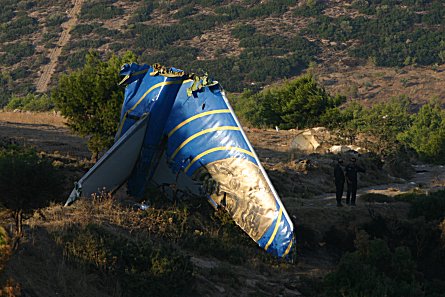Catalogue of latent errors culminated in the 737 disaster in which 121 people died, according to chief investigator
The August 2005 Helios Airways Boeing 737-300 crash, which happened after the aircraft failed to pressurise, was an accident waiting to happen because of multiple systemic faults, says the chief investigator into the accident.
The investigation has found that “latent errors have lain there for years waiting for the pilot to pull the trigger”, Capt Akrivos Tsolakis, head of the Hellenic Air Accident Investigation and Aviation Safety Board (AAIASB) told the Flight Safety Foundation (FSF) European Regions Airline Association European Aviation Safety Seminar in Athens, Greece last week.
|
| All 121 people on board the 737 died |
Tsolakis made it clear that all the parties involved in the accident made some contribution to the systemic latent faults that created “a window of opportunity” for the errors made by the pilots. He did not specify those faults, or those responsible for them.
The main parties involved are the airline, the Cyprus Civil Aviation Authority and the aircraft manufacturer, Tsolakis confirmed.
Earlier information released by the AAIASB indicates that the fundamentals of the accident are the aircraft’s failure to pressurise and the fact that the crew became unconscious from hypoxia.
Before the flight, maintenance crew who had carried out a pressurisation check left the control on manual instead of automatic and the pilots failed to correct this during pre-take-off checks, so the aircraft did not pressurise as it climbed. Post-take-off checks require no further confirmation of the pressurisation control selection.When the audible cabin altitude alert sounded, the crew thought it was an erroneous configuration warning because the sound is identical, and their subsequent mindset and actions were determined by this preconception until hypoxia overcame them as the aircraft continued to climb, Tsolakis has previously reported.
Tsolakis has also noted, since beginning the investigation, that there have been numerous failures to pressurise in 737s with different airlines, but with non-fatal outcomes because the crew reacted appropriately.
The 737 was climbing out of Larnaca, Cyprus bound for Athens and flew as far as the final-approach fix under the control of the flight-management system and autopilot, ran out of fuel and crashed at Grammatikos, near Athens. killing all 121 people on board.
The draft report has been prepared for the final stage of the process, in which all the parties to the accident have 60 days to comment. Tsolakis says the final report is likely to be ready for publication by June or July.
DAVID LEARMOUNT / ATHENS
Source: Flight International
























